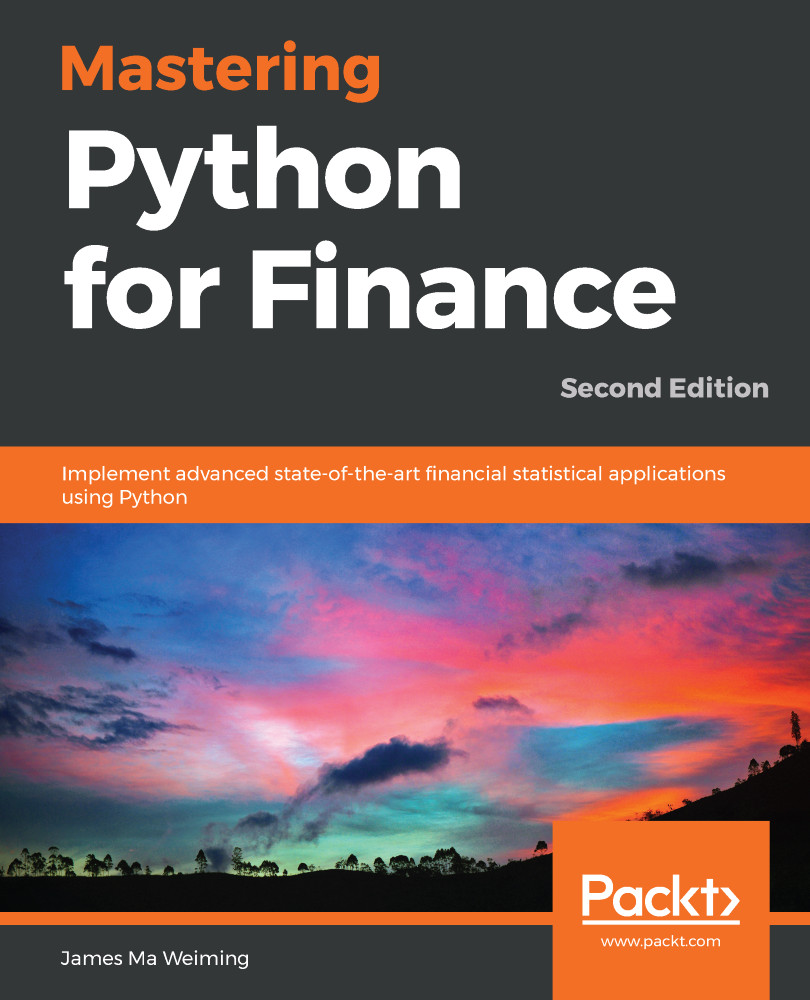Investors use volatility derivatives to diversify and hedge their risk in equity and credit portfolios. Since long-term investors in equity funds are exposed to downside risk, volatility can be used as a hedge for the tail risk and replacement for the put options. In the United States, the Chicago Board Options Exchange (CBOE) Volatility Index (VIX), or simply called the VIX, measures the short-term volatility implied by S&P 500 stock index options with an average expiration of 30 days. Many people around the world use the VIX to measure stock market volatility over the next 30-day period. In Europe, the equivalent volatility counterpart indicator is the EURO STOXX 50 Volatility (VSTOXX) Market Index. For benchmark strategies utilizing the S&P 500 Index, the nature of its negative correlation with the VIX presents a viable way...
-
Book Overview & Buying

-
Table Of Contents

Mastering Python for Finance - Second Edition
By :

Mastering Python for Finance
By:
Overview of this book
The second edition of Mastering Python for Finance will guide you through carrying out complex financial calculations practiced in the industry of finance by using next-generation methodologies. You will master the Python ecosystem by leveraging publicly available tools to successfully perform research studies and modeling, and learn to manage risks with the help of advanced examples.
You will start by setting up your Jupyter notebook to implement the tasks throughout the book. You will learn to make efficient and powerful data-driven financial decisions using popular libraries such as TensorFlow, Keras, Numpy, SciPy, and scikit-learn. You will also learn how to build financial applications by mastering concepts such as stocks, options, interest rates and their derivatives, and risk analytics using computational methods. With these foundations, you will learn to apply statistical analysis to time series data, and understand how time series data is useful for implementing an event-driven backtesting system and for working with high-frequency data in building an algorithmic trading platform. Finally, you will explore machine learning and deep learning techniques that are applied in finance.
By the end of this book, you will be able to apply Python to different paradigms in the financial industry and perform efficient data analysis.
Table of Contents (16 chapters)
Preface
Overview of Financial Analysis with Python
Section 2: Financial Concepts
The Importance of Linearity in Finance
Nonlinearity in Finance
Numerical Methods for Pricing Options
Modeling Interest Rates and Derivatives
Statistical Analysis of Time Series Data
Section 3: A Hands-On Approach
Interactive Financial Analytics with the VIX
Building an Algorithmic Trading Platform
Implementing a Backtesting System
Machine Learning for Finance
Deep Learning for Finance
Other Books You May Enjoy

